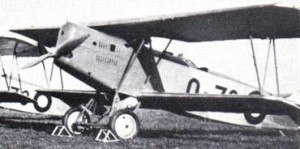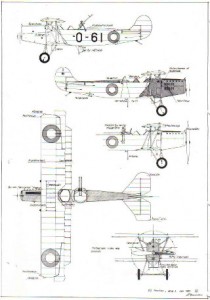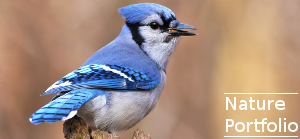 O-Maskinen is going to fly again, after 70 years.
O-Maskinen is going to fly again, after 70 years.
This time as a model.
I have finally managed to track down some 3-views of this plane. I will document the design and construction of this scale model on this thread.
The O-maskine was a Danish trainer designed in 1926. For more information regarding this plane, see the O-Maskine details page. There are also some photos of the O-Maskine in the gallery.
Research
This plane had a wing-span of 10.66m, length of 8.4m and a height of 2.7m. Note that the span of 10.66m MIGHT be a typo in my source material. It MIGHT be 10.6m. If the 3-view is to scale, this discrepancy will show up when I start the design. (IT IS A TYPO – 10.66m tally with the 3-view. The correct wing-span is 10.6m). As always, my models are in scale 1:5, giving this model a wingspan of: 2.120m, length of 1.68m and a height of 0.54m.
The first thing I do is to get out the 3-views and study them in detail. In the case of the O-maskine 3-view, there are a few structural details that I am unsure about, i.e. are the horizontal lines merely canvas stitching or are there some structural steel-tubing or wood longerons underneat? I also need to determine those details that varied from plane to plane – in this case the oil-cooler, the shape of the horizontal elevator and the cockpit areas.
Horizontal Lines
 From photos it’s obvious that the horizontal lines are structural. There are two longerons on each side of the fuselage. However, these are surely wooden, as they are not shown on the drawings of the fuselage metal frame. Most likely they are simply there for cosmetic and aero-dynamic reasons – to prevent vertical steel tubing and the bracing wires from showing through the canvas.
From photos it’s obvious that the horizontal lines are structural. There are two longerons on each side of the fuselage. However, these are surely wooden, as they are not shown on the drawings of the fuselage metal frame. Most likely they are simply there for cosmetic and aero-dynamic reasons – to prevent vertical steel tubing and the bracing wires from showing through the canvas.
Details
Two different oil coolers were used on the original aircraft, one square and one rounded. On a model like this, they are not part of the fuselage as such, and more an ‘add-on’ detail, so I do not need to worry about it at this time. The remaining major detail is the shape of the horizontal elevators. They were either rounded or square. I will design both.





 30/12/2009
30/12/2009
Leave a reply